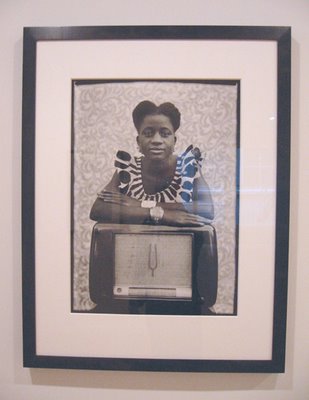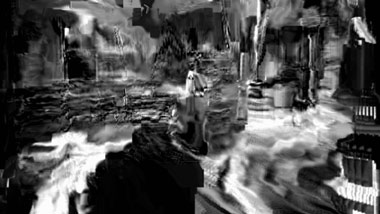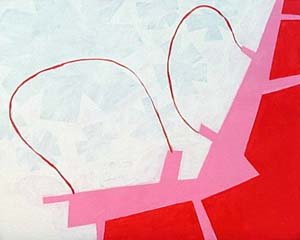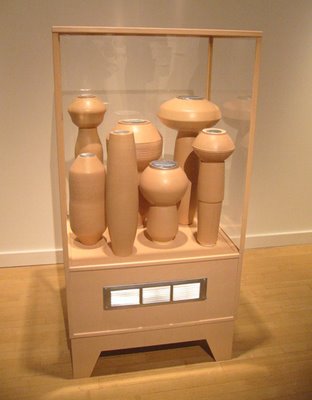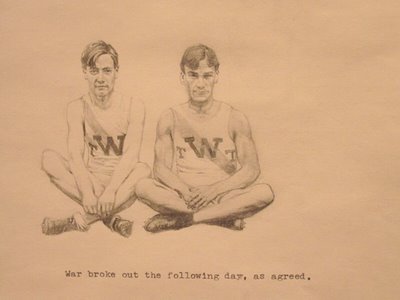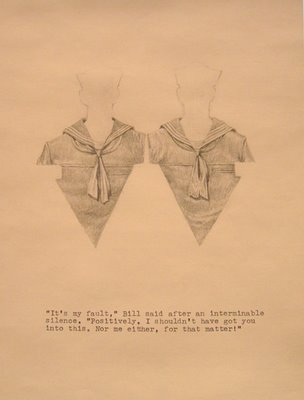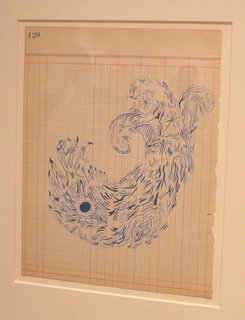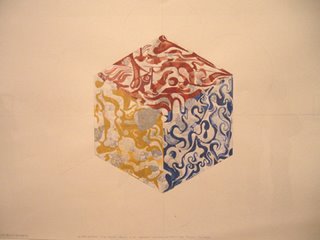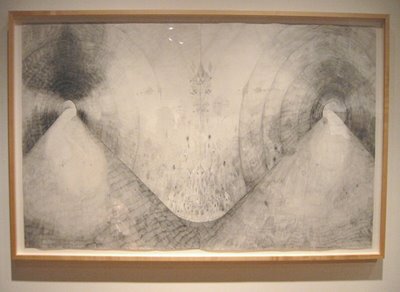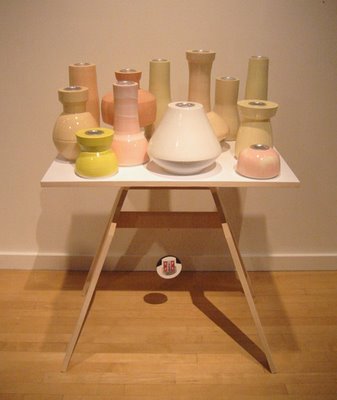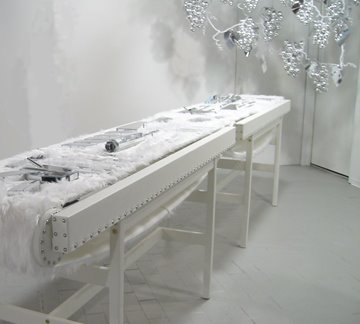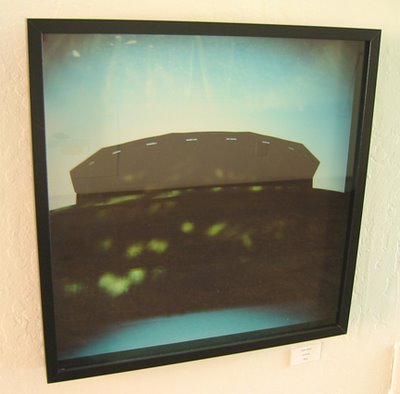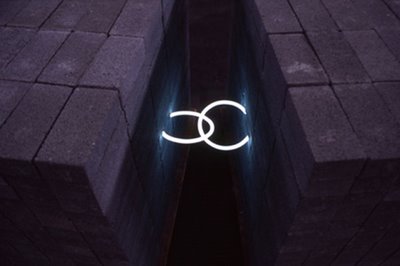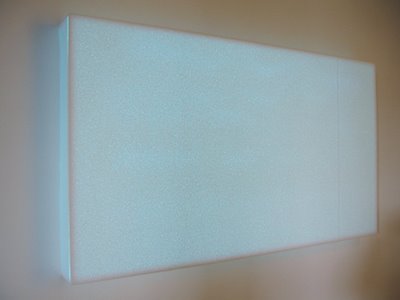
Alert: This exhibit is scheduled to close on 11/24/06.
San Francisco painter Paul Wackers makes a strong impression in a solo exhibit at Eleanor Harwood Gallery. His previous solo outing was in a tiny record store, now closed. That was a good show, but this one is better. I would say this young artist is on the cusp, with plenty of attention headed his way.
Most of the work on view is acrylic on panel. The paint lies flat on the surface. The palette tends to be dark, a result of seeking fine color gradations through paint mixing. Even when the work looks dark, you find quite a range of color within. In some of the new work, Wackers has deliberately punctured the darkness with lighter or more saturated hues. Sizes range from 16x12 to 53x37.5.
The paintings bear a family resemblance, but each one is uniquely conceived. The most common subject matter is a striking piece of architecture situated in a landscape without people, animals, or vehicles. In two of them, the structures are Modernist (one a borrowing from Frank Lloyd Wright’s Fallingwater). In others, the structures call to mind Norwegian churches, African thatched huts, and in one case a polychrome teepee by artist Chris Johanson. Perspective tends to be flattened. In a couple works, Wackers pushes toward pure abstraction. In all the work, the imagery is sharply organized, and there are often areas of obsessively fine detail.
Even at its most abstract, the work conveys a sense of spiritual force mediated through structures. But the formalism of the approach distances the work from any mystic bombast. In one case, humor serves this purpose.
The images included here cover the majority of work in this splendid show. The image at the top is a more abstract piece (36 x 40"). Seven others are shown below. The gallery is located in San Francisco’s Mission District. Call (415) 282-4248 for the address and viewing hours.
Here is one of the smaller works, 24 x 20", painted on linen rather than panel:
 The following is 40 x 30":
The following is 40 x 30":
Here's a diptych from 2005 that is 30 x 44":
 The following is 40 x 30":
The following is 40 x 30": Below is a larger work, 40 x 36":
Below is a larger work, 40 x 36": Below is a double-panel work, the largest, 53 x 37.5":
Below is a double-panel work, the largest, 53 x 37.5": The following work is 40 x 30":
The following work is 40 x 30":










